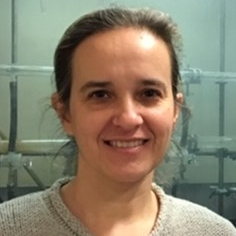Metal Complexes as Nonlinear Optical Molecular Materials
A special issue of Inorganics (ISSN 2304-6740). This special issue belongs to the section "Coordination Chemistry".
Deadline for manuscript submissions: closed (31 October 2018) | Viewed by 23735
Special Issue Editors
Interests: coordination compounds; organometallic complexes; second-order nonlinear optics; second harmonic generation; dye-sensitized solar cells; luminescence
Interests: synthesis; coordination chemistry; organic chemistry; solar cells; dyes; electrolites; luminescent complexes; OLEDs; nonlinear optics; bio-imaging; photodynamic therapy
Special Issues, Collections and Topics in MDPI journals
Interests: coordination complexes; luminescent compounds; nonlinear optical materials; DSSCs
Special Issues, Collections and Topics in MDPI journals
Special Issue Information
Dear Colleagues,
Coordination and organometallic complexes with second- or third- order nonlinear optical (NLO) properties have attracted increasing attention as molecular building block materials for optical communications, optical data processing and storage or electro-optical devices. Remarkably, they present additional flexibility, when compared to organic chromophores, due to metal-ligand charge-transfer (MLCT) transitions, often at relatively low energy and of high intensity, tunable by choosing the nature, oxidation state, and coordination sphere of the metal center. In particular, metal complexes with commutable NLO responses are of interest for novel optoelectronic applications such as molecular-scale memory devices. This Special Issue aims at collecting research and review contributions of recent advances in all aspects of metal complexes with NLO properties and sharing given extensive knowledge with a broader audience by means of an open access way. This NLO issue is dedicated to Prof. Renato Ugo in occasion of his 80th birthday. We invite you to contribute papers in this fascinating research area and allow your work to impact the next generation NLO trend.
Prof. Dr. Dominique Roberto
Prof. Dr. Alessia Colombo
Prof. Dr. Claudia Dragonetti
Guest Editors
Manuscript Submission Information
Manuscripts should be submitted online at www.mdpi.com by registering and logging in to this website. Once you are registered, click here to go to the submission form. Manuscripts can be submitted until the deadline. All submissions that pass pre-check are peer-reviewed. Accepted papers will be published continuously in the journal (as soon as accepted) and will be listed together on the special issue website. Research articles, review articles as well as short communications are invited. For planned papers, a title and short abstract (about 100 words) can be sent to the Editorial Office for announcement on this website.
Submitted manuscripts should not have been published previously, nor be under consideration for publication elsewhere (except conference proceedings papers). All manuscripts are thoroughly refereed through a single-blind peer-review process. A guide for authors and other relevant information for submission of manuscripts is available on the Instructions for Authors page. Inorganics is an international peer-reviewed open access monthly journal published by MDPI.
Please visit the Instructions for Authors page before submitting a manuscript. The Article Processing Charge (APC) for publication in this open access journal is 2700 CHF (Swiss Francs). Submitted papers should be well formatted and use good English. Authors may use MDPI's English editing service prior to publication or during author revisions.
Keywords
- Coordination compounds
- Organometallic complexes
- Second-order nonlinear optics
- Second harmonic generation
- Third-order nonlinear optics







